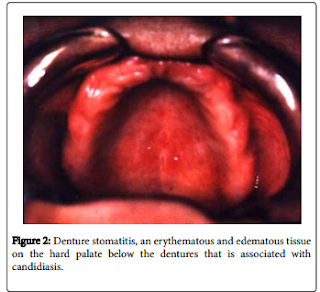Cleaning
and disinfection are essential steps in the reprocessing of medical devices. AutomatedWasher-Disinfectors (AWDs) are widely used in healthcare settings to obtain
both clean and disinfected medical devices.
The use of AWD is advocated in
literature and in standards for minimizing processing variability and infective
risk for the staff of the central sterile supply department (CSSD). According
to the European Medical Devices Directive 93/42/EEC and subsequent amendments
by 2007/47/EC a claim made on a product or procedure has to be proven. Read more>>>>>>>>>>>>>>

We report a 6 month-old baby boy with fever for 5 months,
generalized rash for 3 months, cough and cold for 1 month, poor feeding and
weight loss over last 1 month. He had an uneventful perinatal period and received BCG at birth. Examination revealed mild pallor, generalized
erythematous papular rash with central crusting and splenohepatomegaly. Skin
biopsy and culture confirmed BCG infection while computed tomography of abdomen
and skeletal survey showed disseminated involvement. Immunological
investigations were suggestive of an underlying SCID. The infant showed
improvement with antitubercular therapy combined with intravenous
immunoglobulin and other supportive measures.
Colonization of oral
surfaces by Candida spp. is considered a risk factor for invasive fungal
infections. Oropharyngeal candidiasis manifests clinically as acute
pseudomembranous, acute atrophic, chronic atrophic, chronic hypertrophic/hyperplastic
and angular cheilitis.
Denture-related stomatitis (or chronic atrophic
candidiasis) is characterized by an inflammation of the mucous membrane located
beneath the prosthesis, particularly under the upper denture, sometimes
accompanied by hemorrhagic petechiae. Denture stomatitis is the commonest form
of oral candidiasis and its reported prevalence varies widely reaching up to
65% of denture wearers. Patients may complain of a burning sensation,
irritation, discomfort, bad taste and disturbance of salivation, but in the
majority of cases they are unaware of the problem. Read more>>>>>>>>>>>>>>>
Research
has repeatedly shown that lesbian, gay, and bisexual (LGB) individuals
experience higher risk for both somatic and psychiatric diseases, as compared to
heterosexual individuals.
In addition, it has been demonstrated that LGB
individuals constitute a higher-risk group for health risk behaviors such as
smoking, elevated levels of alcohol consumption and substance abuse, as well as
higher body-mass index among women . Also, there are some results of higher
disability rates among sexual minority individuals, which is consistent with
pernicious effects of minority stress. However, the prior studies are based on
self reported data and their findings should hence be interpreted in the
context of possible misclassifications and recall biases. Read more>>>>>>>>>>>>>
Several studies have investigated prevalence of
respiratory symptoms in the HIV-infected population. Before anti-retroviraltherapy (ART), there was a high prevalence of dyspnea and cough in this
population.
These studies showed low CD4 cell counts, history of smoking and
intravenous drug use, and previous history of pneumonia were associated with
increased risk of dyspnea and cough symptoms. More recent studies in the
post-ART era show that respiratory symptoms continue to be common in HIV-infected
individuals, with the prevalence of cough ranging from 23-37% and prevalence of
dyspnea ranging from 16-44%. Read more>>>>>>>>>>>>>>
Catheter-associated
urinary tract infection (CA-UTI) is a relatively common infection, especially
among older people with long-term indwelling urethral catheter. The term CA-UTI is used to refer to symptomatic urinary tract infection in individuals with
indwelling catheter.
In general, less than 30 days with an indwelling urinary
catheter is considered short term while 30 days or more is deemed as long term
or chronic. Older people with chronic indwelling catheters have significantly
increased risk of morbidity from CA-UTI compared to those with bacteriuria
without long-term catheters. In long-term-care
facilities, an estimated 5-10% of residents require chronic indwelling
catheters. Indwelling catheters are used more commonly in men than in women
living in these facilities, with urinary retention being the most common reason. Read more>>>>>>>>>>>>>>>





